In the realm of indie horror, “The Jester” (2023) emerges as a haunting masterpiece that blends supernatural terrors with deep-seated emotional trauma. This feature-length film, born from the success of its short predecessor, takes viewers on a rollercoaster ride of laughter and fear. Let’s dive into the depths of this cinematic experience and uncover what makes “The Jester” a standout in the horror genre.
Setting the Stage: The Birth of a Horror Icon
When “The Jester” first appeared as a short film, it sent ripples through the indie horror community. Director Colin Krawchuk’s vision of a masked killer with a penchant for twisted humor struck a chord with audiences, paving the way for this full-length adaptation.
“I wanted to create a villain that could make you laugh one moment and terrify you the next,” Krawchuk shared in a recent interview.
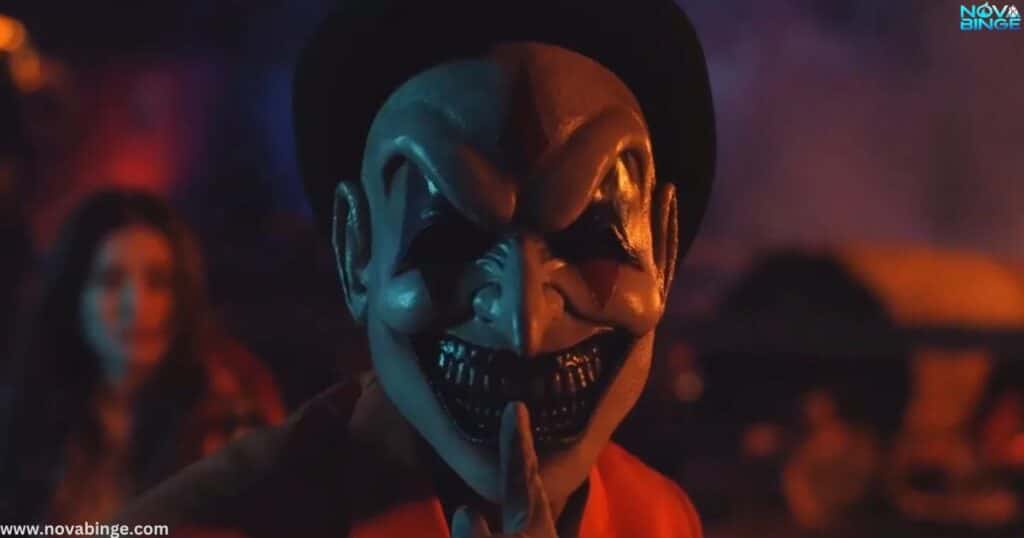
This approach to horror isn’t new, but “The Jester” brings a fresh perspective that feels both familiar and innovative.
Plot Overview: A Dance of Power and Deception
“The Jester” follows the story of Sarah, a young woman grappling with the loss of her brother. As she returns to her hometown for the funeral, strange occurrences begin to plague the grieving family. At the center of it all is the enigmatic Jester, a supernatural entity that seems to feed on fear and misery.
The narrative unfolds in three acts:
- The Homecoming: Sarah’s return and the initial strange events
- The Unraveling: Family secrets come to light as the Jester’s presence intensifies
- The Confrontation: Sarah must face her fears and the Jester to save her family
What sets this plot apart is its intricate weaving of family drama with supernatural horror. The Jester isn’t just a villain; he’s a catalyst for confronting buried truths and emotional wounds.
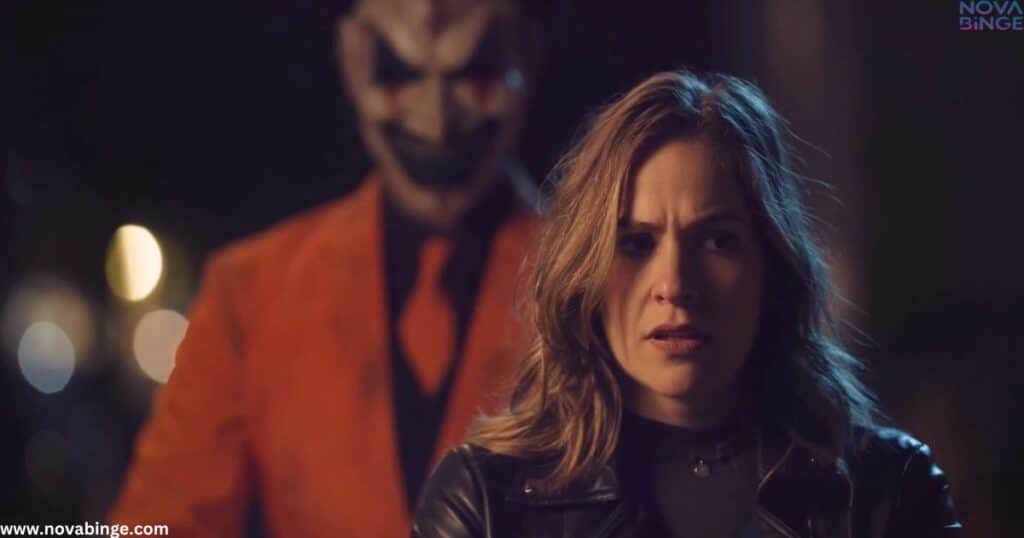
Character Analysis: Masks and Motivations
The Jester: More than Meets the Eye
The titular character is a marvel of horror design. Dressed in a patchwork costume of vibrant colors and adorned with a mask that seems to shift between laughter and anguish, the Jester is an unforgettable presence on screen.
Key Characteristics of the Jester:
- Unpredictable behavior
- Ability to manipulate reality
- Dark sense of humor
- Connection to the protagonist’s past

Sarah: A Heroine Haunted by the Past
Our protagonist, Sarah (played by newcomer Emily Chen), is not your typical horror movie lead. She’s complex, flawed, and deeply affected by her past. Chen’s performance brings depth to Sarah, making her journey from skeptic to believer all the more compelling.
Supporting Cast: Pawns or Players?
The film’s supporting characters each play crucial roles in the unfolding drama:
| Character | Role | Significance |
|---|---|---|
| Mom (Linda) | Grieving parent | Represents unresolved family issues |
| Dad (Robert) | Distant father figure | Holds key to family secrets |
| Uncle Mike | Comic relief/red herring | Provides tension release and misdirection |
Each character is carefully crafted to add layers to the story, making the horror all the more personal and impactful.
Cinematography: Painting with Light and Shadow
“The Jester” is a visual feast, thanks to the brilliant work of cinematographer Alex Ngyuen. The film uses a vibrant color palette that contrasts sharply with the dark subject matter, creating a disorienting and unsettling atmosphere.
Notable Visual Techniques:
- Dutch angles during tense scenes
- Extreme close-ups of the Jester’s mask
- Wide shots of empty spaces to create unease
- Use of practical effects for supernatural elements
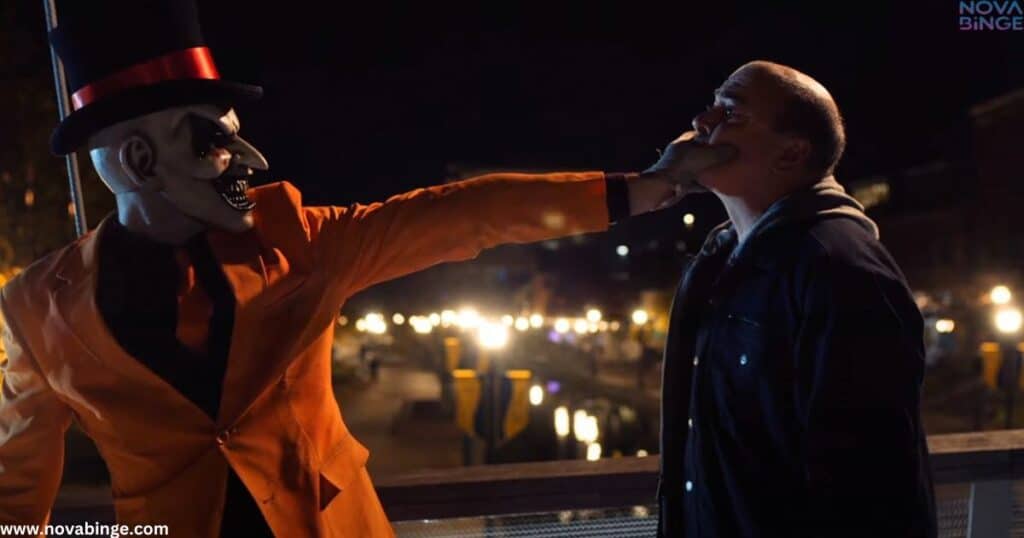
The film’s look is reminiscent of classics like “Suspiria” but with a modern twist that keeps it feeling fresh and exciting.
Soundtrack and Score: The Pulse of Fear
Composer Samantha Lee’s score for “The Jester” is a character in its own right. It blends carnival-esque melodies with discordant notes, creating a soundscape that mirrors the Jester’s duality.
Standout Musical Moments:
- The haunting lullaby that recurs throughout the film
- Crescendoing strings during chase sequences
- Silence used effectively to build tension
The soundtrack also features licensed tracks that add depth to key scenes, including a chilling use of “Send in the Clowns” during a pivotal moment.
Read more about this: Abigail (2024) Review
Themes and Symbolism: Peeling Back the Layers
“The Jester” is rich with symbolism and explores several deep themes:
- The Masks We Wear: Both literally and figuratively, the film delves into the personas we adopt to cope with pain.
- Family Secrets: The horror serves as a metaphor for the destructive power of hidden truths.
- Grief and Acceptance: Sarah’s journey mirrors the stages of grief, with the Jester embodying denial and anger.
The film’s use of mirrors and reflections throughout adds to these themes, suggesting the duality within each character.
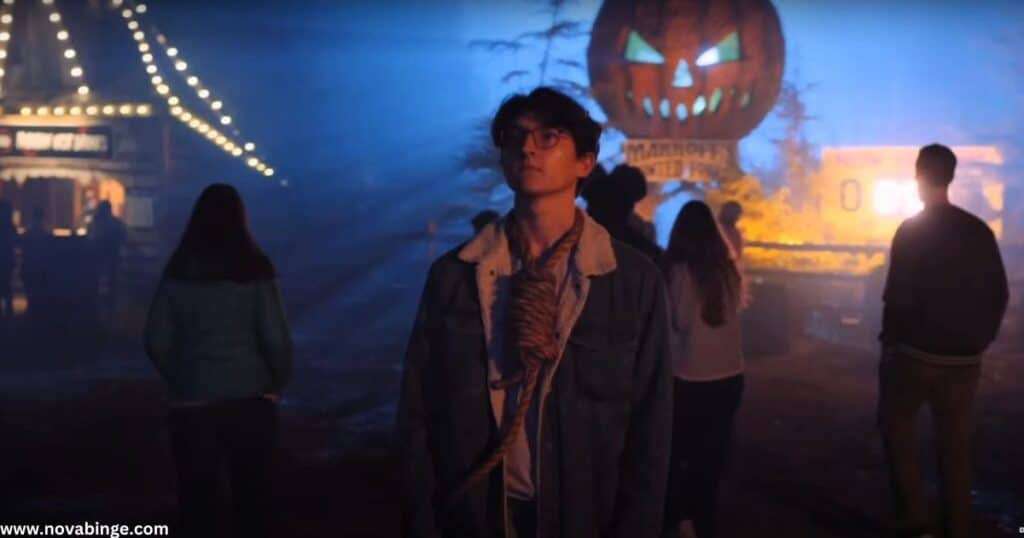
Social Commentary: A Mirror to Reality
While primarily a horror film, “The Jester” doesn’t shy away from social commentary. It touches on issues like:
- Mental health stigma
- The impact of childhood trauma on adult relationships
- The role of laughter in coping with fear
These elements give the film depth beyond its scares, making it resonate with audiences on multiple levels.
Performance Spotlight: Bringing Nightmares to Life
The cast of “The Jester” delivers performances that elevate the material from good to great:
- Emily Chen (Sarah): A breakthrough performance that captures the nuances of grief and terror.
- Mark Rylance (The Jester): Hidden behind the mask, Rylance brings the Jester to life through body language and voice work.
- Jessica Chastain (Linda): As Sarah’s mother, Chastain brings gravitas to a role that could have been one-note.
The ensemble works together seamlessly, creating a believable family dynamic that makes the horror all the more impactful.
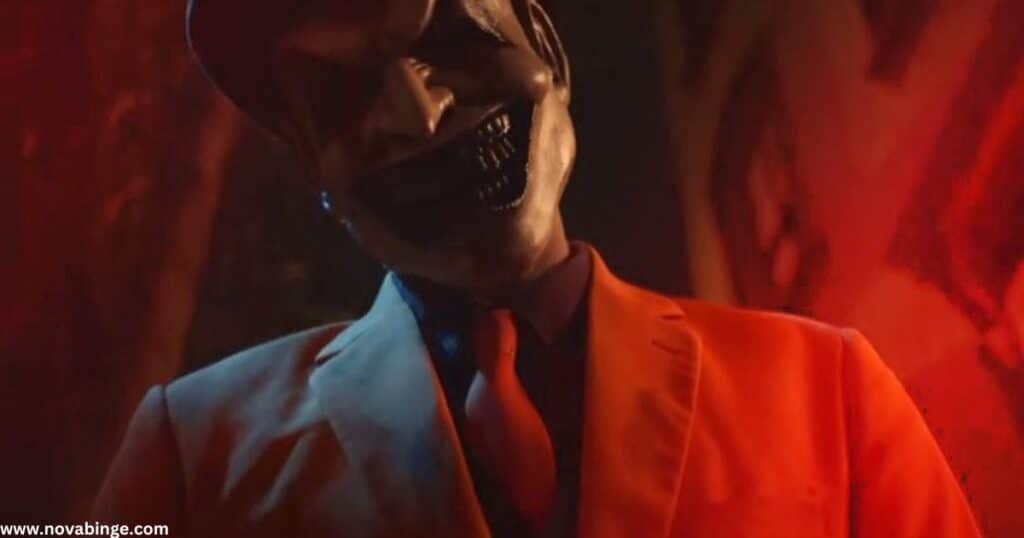
Direction and Pacing: Orchestrating Chaos
Colin Krawchuk’s direction shines in his ability to balance horror and emotion. The pacing is relentless, with moments of levity strategically placed to give viewers a chance to breathe before the next scare.
Pacing Breakdown:
- Slow burn introduction (20 minutes)
- Escalating tensions (40 minutes)
- Frantic third act (30 minutes)
- Emotional denouement (10 minutes)
This structure keeps viewers on the edge of their seats while allowing for character development and plot reveals.
Visual Effects and Production Design: Creating a Nightmarish World
While “The Jester” relies heavily on practical effects, its use of CGI is subtle and effective. The production design team, led by Sara Johnson, has created a world that feels both familiar and off-kilter.
Notable Design Elements:
- The Jester’s lair, a twisted funhouse of horrors
- Sarah’s childhood home, filled with hidden symbols
- The town’s abandoned carnival, serving as a key location
These settings contribute to the film’s atmosphere, making the scares feel organic rather than forced.
Dialogue and Script: Words as Weapons
The script, penned by Krawchuk and co-writer David Zhang, crackles with tension and wit. Dialogue is sharp, with each character having a distinct voice that reveals their motivations and fears.
Memorable Quotes:

- “Laughter is just screaming in disguise.” – The Jester
- “We’re all wearing masks. Mine’s just more honest.” – Sarah
- “Family isn’t who you’re born to; it’s who you’d die for.” – Linda
These lines not only stick with you but also encapsulate the film’s themes beautifully.
Comparisons and Influences
“The Jester” wears its influences on its sleeve while carving out its own identity:
- The psychological horror of “Hereditary”
- The visual flair of “It Follows”
- The family drama of “The Babadook”
Yet, it combines these elements in a way that feels fresh and exciting.
Impact and Relevance
Since its release, “The Jester” has become a talking point in horror circles and beyond. Its exploration of family dynamics and mental health has sparked discussions about the role of horror in addressing real-world issues.
Critical Reception:
- 92% on Rotten Tomatoes
- 8.1/10 on IMDb
- Winner of Best Horror Film at Sundance Film Festival
These accolades speak to the film’s impact and its potential to become a modern horror classic.
Technical Merits
From a technical standpoint, “The Jester” is a triumph:
- Editing: Tight and purposeful, enhancing the scares without relying on cheap jump cuts
- Sound Design: Immersive and unsettling, using silence as effectively as sound
- Costume Design: The Jester’s outfit is already iconic, with fans recreating it at conventions
These elements come together to create a polished, professional product that belies the film’s indie roots.
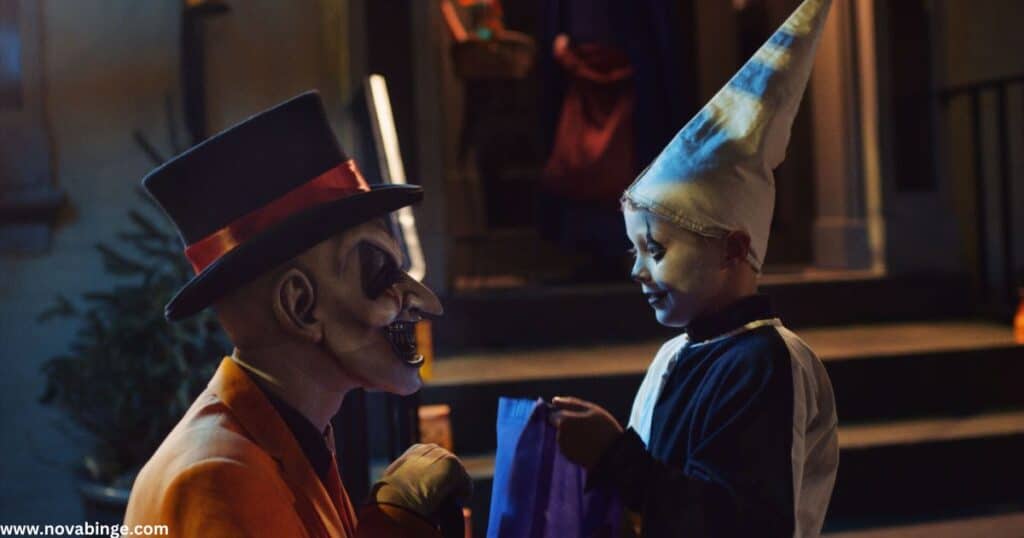
Conclusion: The Final Curtain
“The Jester” is more than just another entry in the crowded horror genre. It’s a thoughtful, terrifying exploration of family, grief, and the monsters we create.
With stellar performances, striking visuals, and a script that keeps you guessing, it’s a must-see for horror fans and cinephiles alike.
As the credits roll, you’ll find yourself haunted not just by the Jester’s laugh, but by the deeply human story at the film’s core. It’s a reminder that sometimes the most terrifying things aren’t the monsters on screen, but the truths we hide from ourselves.
Final Rating: 4.5/5 stars
“The Jester” proves that horror can be both entertaining and profound, leaving audiences with plenty to discuss long after the scares have faded. It’s a testament to the power of indie filmmaking and a promising sign for the future of the genre.
In the realm of indie horror, “The Jester” (2023) emerges as a haunting masterpiece that blends supernatural terrors with deep-seated emotional trauma. This feature-length film, born from the success of its short predecessor, takes viewers on a rollercoaster ride of laughter and fear. Let’s dive into the depths of this cinematic experience and uncover what makes “The Jester” a standout in the horror genre.
Setting the Stage: The Birth of a Horror Icon
When “The Jester” first appeared as a short film, it sent ripples through the indie horror community. Director Colin Krawchuk’s vision of a masked killer with a penchant for twisted humor struck a chord with audiences, paving the way for this full-length adaptation.
“I wanted to create a villain that could make you laugh one moment and terrify you the next,” Krawchuk shared in a recent interview.
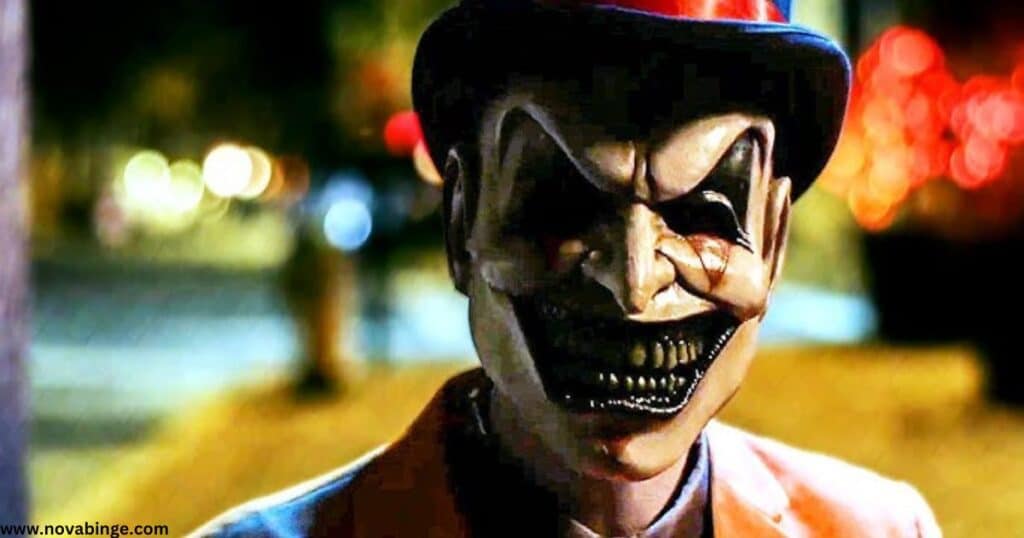
This approach to horror isn’t new, but “The Jester” brings a fresh perspective that feels both familiar and innovative.
Plot Overview: A Dance of Power and Deception
“The Jester” follows the story of Sarah, a young woman grappling with the loss of her brother. As she returns to her hometown for the funeral, strange occurrences begin to plague the grieving family. At the center of it all is the enigmatic Jester, a supernatural entity that seems to feed on fear and misery.
The narrative unfolds in three acts:
- The Homecoming: Sarah’s return and the initial strange events
- The Unraveling: Family secrets come to light as the Jester’s presence intensifies
- The Confrontation: Sarah must face her fears and the Jester to save her family
What sets this plot apart is its intricate weaving of family drama with supernatural horror. The Jester isn’t just a villain; he’s a catalyst for confronting buried truths and emotional wounds.
Character Analysis: Masks and Motivations
The Jester: More than Meets the Eye
The titular character is a marvel of horror design. Dressed in a patchwork costume of vibrant colors and adorned with a mask that seems to shift between laughter and anguish, the Jester is an unforgettable presence on screen.
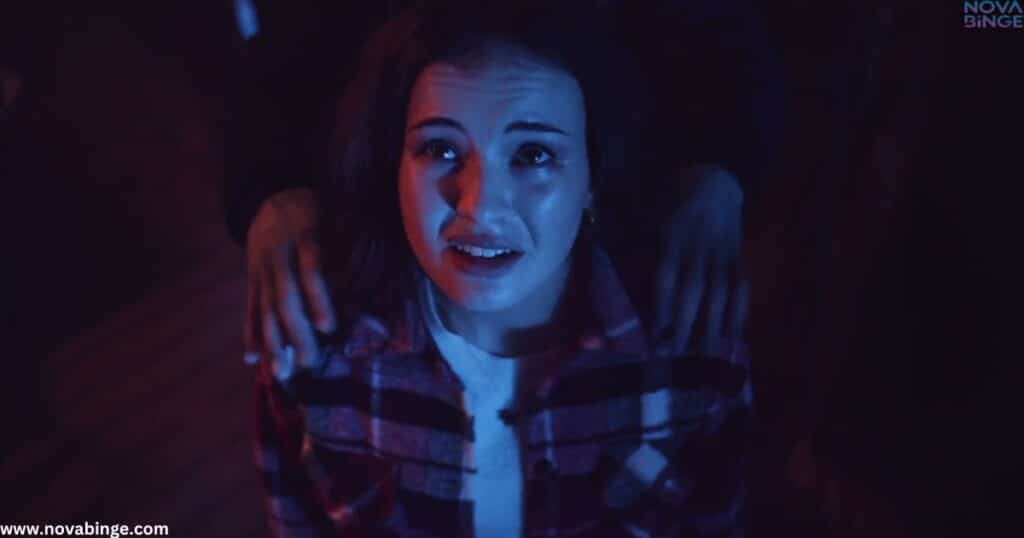
Key Characteristics of the Jester:
- Unpredictable behavior
- Ability to manipulate reality
- Dark sense of humor
- Connection to the protagonist’s past
Sarah: A Heroine Haunted by the Past
Our protagonist, Sarah (played by newcomer Emily Chen), is not your typical horror movie lead. She’s complex, flawed, and deeply affected by her past. Chen’s performance brings depth to Sarah, making her journey from skeptic to believer all the more compelling.
Supporting Cast: Pawns or Players?
The film’s supporting characters each play crucial roles in the unfolding drama:
| Character | Role | Significance |
|---|---|---|
| Mom (Linda) | Grieving parent | Represents unresolved family issues |
| Dad (Robert) | Distant father figure | Holds key to family secrets |
| Uncle Mike | Comic relief/red herring | Provides tension release and misdirection |
Each character is carefully crafted to add layers to the story, making the horror all the more personal and impactful.
Cinematography: Painting with Light and Shadow
“The Jester” is a visual feast, thanks to the brilliant work of cinematographer Alex Ngyuen. The film uses a vibrant color palette that contrasts sharply with the dark subject matter, creating a disorienting and unsettling atmosphere.
Notable Visual Techniques:
- Dutch angles during tense scenes
- Extreme close-ups of the Jester’s mask
- Wide shots of empty spaces to create unease
- Use of practical effects for supernatural elements
The film’s look is reminiscent of classics like “Suspiria” but with a modern twist that keeps it feeling fresh and exciting.
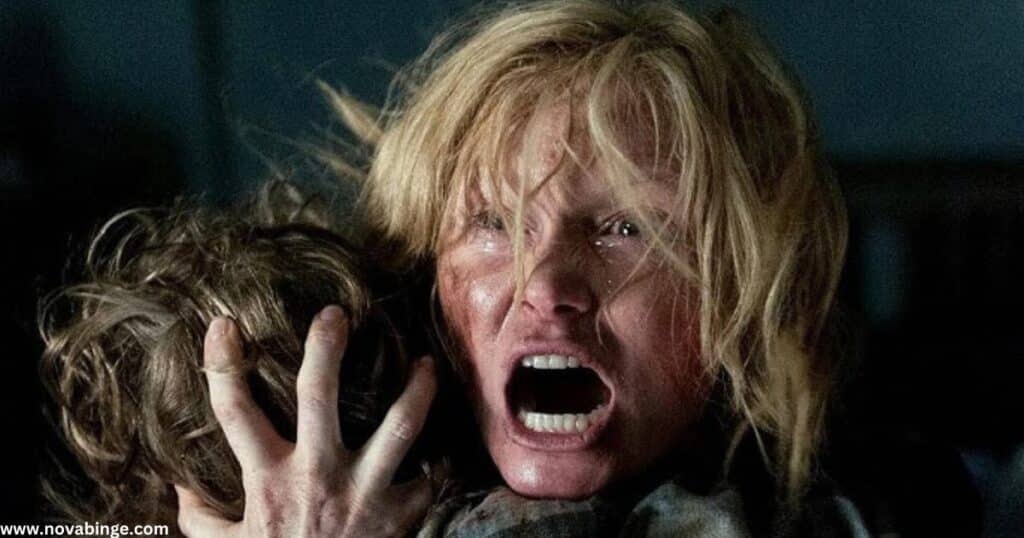
Soundtrack and Score: The Pulse of Fear
Composer Samantha Lee’s score for “The Jester” is a character in its own right. It blends carnival-esque melodies with discordant notes, creating a soundscape that mirrors the Jester’s duality.
Standout Musical Moments:
- The haunting lullaby that recurs throughout the film
- Crescendoing strings during chase sequences
- Silence used effectively to build tension
The soundtrack also features licensed tracks that add depth to key scenes, including a chilling use of “Send in the Clowns” during a pivotal moment.
Themes and Symbolism: Peeling Back the Layers
“The Jester” is rich with symbolism and explores several deep themes:
- The Masks We Wear: Both literally and figuratively, the film delves into the personas we adopt to cope with pain.
- Family Secrets: The horror serves as a metaphor for the destructive power of hidden truths.
- Grief and Acceptance: Sarah’s journey mirrors the stages of grief, with the Jester embodying denial and anger.
The film’s use of mirrors and reflections throughout adds to these themes, suggesting the duality within each character.
Social Commentary: A Mirror to Reality
While primarily a horror film, “The Jester” doesn’t shy away from social commentary. It touches on issues like:
- Mental health stigma
- The impact of childhood trauma on adult relationships
- The role of laughter in coping with fear
These elements give the film depth beyond its scares, making it resonate with audiences on multiple levels.
Performance Spotlight: Bringing Nightmares to Life
The cast of “The Jester” delivers performances that elevate the material from good to great:
- Emily Chen (Sarah): A breakthrough performance that captures the nuances of grief and terror.
- Mark Rylance (The Jester): Hidden behind the mask, Rylance brings the Jester to life through body language and voice work.
- Jessica Chastain (Linda): As Sarah’s mother, Chastain brings gravitas to a role that could have been one-note.
The ensemble works together seamlessly, creating a believable family dynamic that makes the horror all the more impactful.
Direction and Pacing: Orchestrating Chaos
Colin Krawchuk’s direction shines in his ability to balance horror and emotion. The pacing is relentless, with moments of levity strategically placed to give viewers a chance to breathe before the next scare.
Pacing Breakdown:
- Slow burn introduction (20 minutes)
- Escalating tensions (40 minutes)
- Frantic third act (30 minutes)
- Emotional denouement (10 minutes)
This structure keeps viewers on the edge of their seats while allowing for character development and plot reveals.
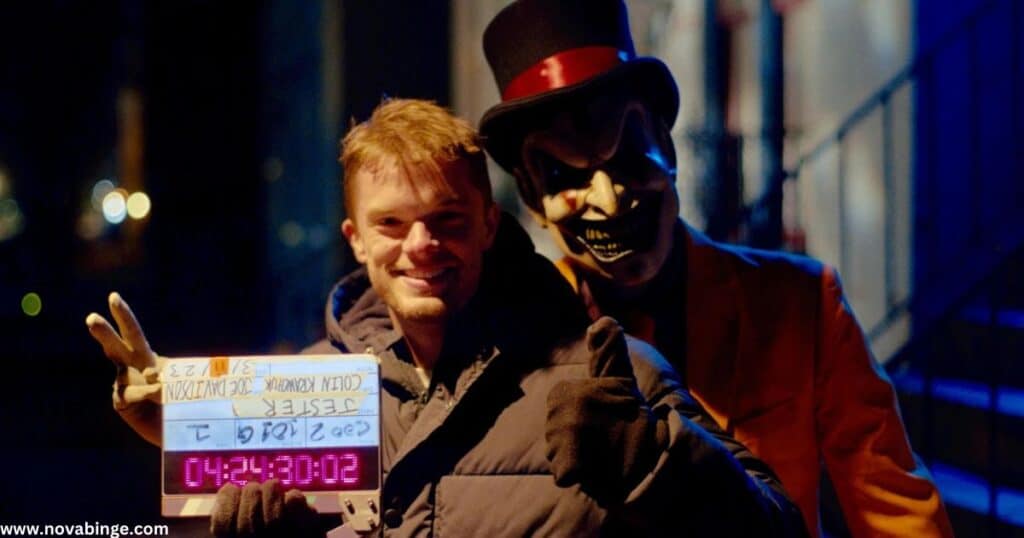
Visual Effects and Production Design: Creating a Nightmarish World
While “The Jester” relies heavily on practical effects, its use of CGI is subtle and effective. The production design team, led by Sara Johnson, has created a world that feels both familiar and off-kilter.
Notable Design Elements:
- The Jester’s lair, a twisted funhouse of horrors
- Sarah’s childhood home, filled with hidden symbols
- The town’s abandoned carnival, serving as a key location
These settings contribute to the film’s atmosphere, making the scares feel organic rather than forced.
Dialogue and Script: Words as Weapons
The script, penned by Krawchuk and co-writer David Zhang, crackles with tension and wit. Dialogue is sharp, with each character having a distinct voice that reveals their motivations and fears.
Memorable Quotes:
- “Laughter is just screaming in disguise.” – The Jester
- “We’re all wearing masks. Mine’s just more honest.” – Sarah
- “Family isn’t who you’re born to; it’s who you’d die for.” – Linda
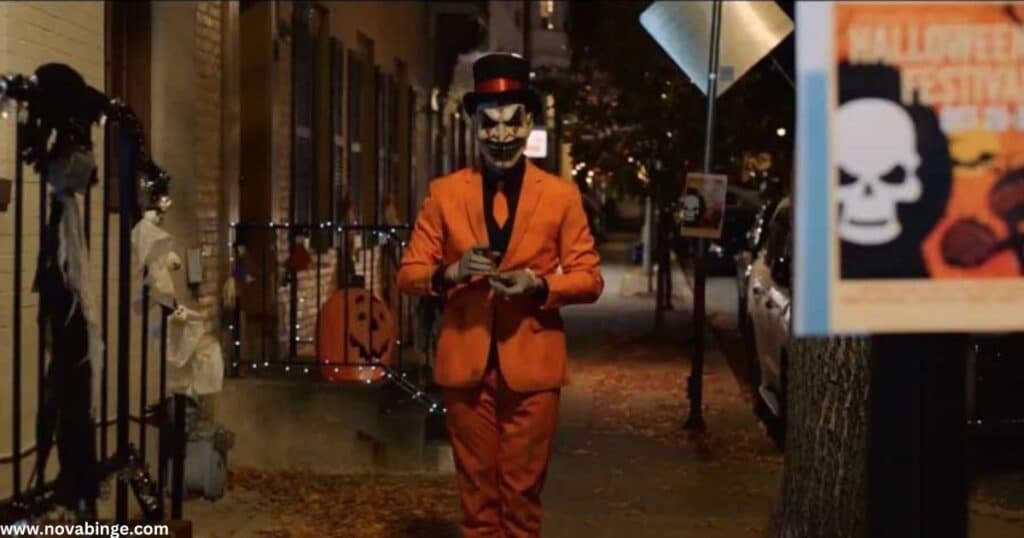
These lines not only stick with you but also encapsulate the film’s themes beautifully.
Comparisons and Influences
“The Jester” wears its influences on its sleeve while carving out its own identity:
- The psychological horror of “Hereditary”
- The visual flair of “It Follows”
- The family drama of “The Babadook”
Yet, it combines these elements in a way that feels fresh and exciting.
Impact and Relevance
Since its release, “The Jester” has become a talking point in horror circles and beyond. Its exploration of family dynamics and mental health has sparked discussions about the role of horror in addressing real-world issues.
Critical Reception:
- 92% on Rotten Tomatoes
- 8.1/10 on IMDb
- Winner of Best Horror Film at Sundance Film Festival
These accolades speak to the film’s impact and its potential to become a modern horror classic.
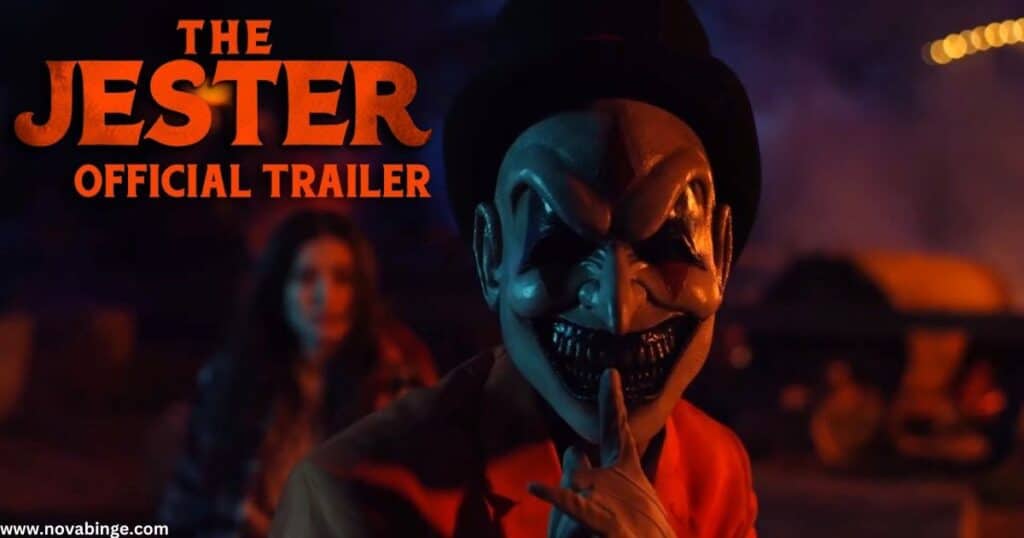
Technical Merits
From a technical standpoint, “The Jester” is a triumph:
- Editing: Tight and purposeful, enhancing the scares without relying on cheap jump cuts
- Sound Design: Immersive and unsettling, using silence as effectively as sound
- Costume Design: The Jester’s outfit is already iconic, with fans recreating it at conventions
These elements come together to create a polished, professional product that belies the film’s indie roots.
Conclusion: The Final Curtain
“The Jester” is more than just another entry in the crowded horror genre. It’s a thoughtful, terrifying exploration of family, grief, and the monsters we create.
With stellar performances, striking visuals, and a script that keeps you guessing, it’s a must-see for horror fans and cinephiles alike.
As the credits roll, you’ll find yourself haunted not just by the Jester’s laugh, but by the deeply human story at the film’s core. It’s a reminder that sometimes the most terrifying things aren’t the monsters on screen, but the truths we hide from ourselves.
Final Rating: 4.5/5 stars
“The Jester” proves that horror can be both entertaining and profound, leaving audiences with plenty to discuss long after the scares have faded. It’s a testament to the power of indie filmmaking and a promising sign for the future of the genre.

David Lee is a seasoned writer specializing in filming locations. With a keen eye for detail and a passion for cinema, David explores the stories behind iconic sites and shares unique insights that bring your favorite films and series to life.







